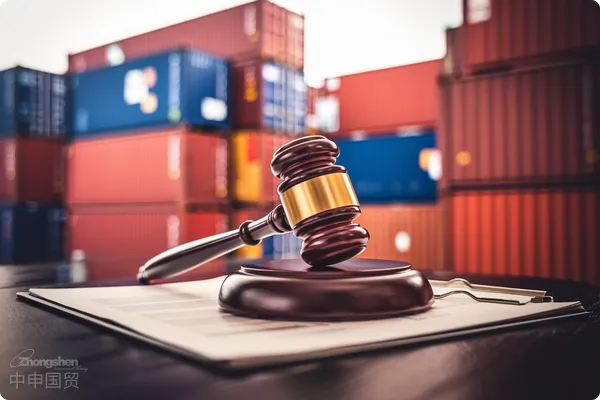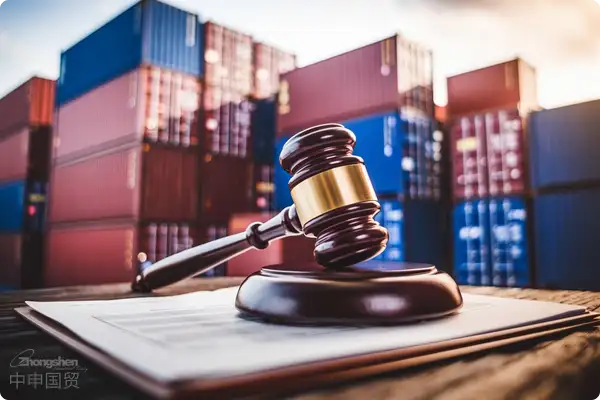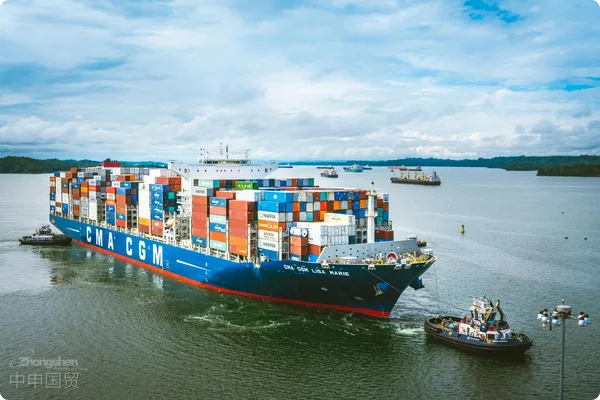- Shanghai Zhongshen International Trade Co., Ltd. - Two decades of trade agency expertise.
- Service Hotline: 139 1787 2118
Recently, changes in US trade policies have left manyCross-border E-commerceenterprises feeling confused. On April 3, 2025, the US announced a 10% base tariff increase on multiple countries and regions globally, with an additional reciprocal tariff imposed on countries with large trade deficits like China. Moreover, starting from May 2, the $800 tax exemption for small parcels will also be canceled. And thats not all—China quickly retaliated by imposing additional tariffs on US goods. Faced with this trade storm, what should cross-border e-commerce enterprises targeting the US market do? Dont panic! Today, well discuss how to address trade risk compliance issues, hoping to provide you with some inspiration and direction!

Background: The Combo Punch of the Trade War
The pace of this trade war is almost suffocating. The US first imposed reciprocal tariffs on Chinese goods, then canceled the $800 tax exemption policy for small parcels—a lifeline for many small and medium-sized sellers. Starting from May 2, parcels arriving via international mail will be taxed at 30% of the product value or $25; goods shipped through other channels will face even higher comprehensive tariffs, including base tariffs, reciprocal tariffs, fentanyl-related tariffs, and Section 301 tariffs.
China, not to be outdone, introduced countermeasures on April 4: additional tariffs, export controls, suspending US products from entering China... The back-and-forth policy changes have put immense pressure on cross-border e-commerce enterprises. Sellers relying on small parcel direct shipping face surging costs and logistics disruptions, with any misstep potentially leading to failure. So, the question is: What exactly are the risks? And how should we respond?
Trade Risk Analysis: Where Are Your Pain Points?
The risks brought by policy changes are no joke—we must first understand the enemys appearance:
- Soaring costs: With tariffs increasing repeatedly, especially for small parcel direct shipping sellers, cost pressures have doubled, squeezing profit margins to the breaking point.
- Logistics disruptions: Longer customs clearance times, parcels potentially detained for inspection, delayed deliveries, and naturally declining customer satisfaction.
- Intensified competition: Price hikes may lose customers, but not raising prices means no profits—a dilemma.
- Record - filing of Foreign Trade Operators: Unpredictable policies mean any oversight could lead to pitfalls, such as declaration errors or choosing unreliable partners.
With these pain points laid bare, enterprises cannot sit idle—they must find solutions quickly!
Response Strategies: Turning Crisis into Opportunity
The good news is, where theres a will, theres a way! Here are several practical coping strategies - lets take a look together:
Optimize logistics solutions: Are overseas warehouses a lifesaver?
If direct small parcel shipping isnt working, try overseas warehouses! Setting up warehouses in the U.S. allows bulk inventory storage, reduces logistics costs, and enables local delivery for faster shipping. But beware of potential pitfalls:
- : Check the Registration Form for Foreign Trade Operators and Class A customs declaration qualification of the agency companySome overseas warehouse providers may appear impressive but lack proper qualifications or operate irregularly. If U.S. customs inspects and seizes the goods, big trouble could follow.
- Contract trapsIf logistics contracts dont clearly specify who bears tariffs or how delivery delays are handled, policy changes could lead to disputes.
TipsWhen selecting overseas warehouses, keep your eyes open - check the providers qualifications, warehouse management systems, and track records. Have professionals review contracts before signing, clearly defining tariff responsibilities and delivery time liabilities. Dont skip this step!
Adjust supply chains: Theres an art to offshore production
Rather than battling high tariffs in the U.S. market, consider relocating production to low-tariff regions like Vietnam or Mexico, or exploring new markets like Europe or Southeast Asia. But this approach has challenges too:
- Rules of OriginEach country has different definitions of country of origin - misunderstanding could mean missing out on low tariffs.
- Local regulationsNew locations labor laws, environmental regulations, and tax requirements must be thoroughly understood, or investments could be lost.
TipsDo thorough homework before starting - research target markets laws and conditions, preferably hiring professional lawyers to design comprehensive compliance plans covering entry to exit strategies.
Product branding: From low price to high value
Instead of competing on price, compete on brand! Building brand stories and enhancing product innovation can increase added value and customer loyalty. But branding has risks too:
- False advertisingU.S. advertising laws are strict - exaggerating claims could result in heavy fines.
- Quality issuesNon-compliant products may face recalls or even lawsuits.
- Intellectual property rightsIntellectual property risks
TipsFailing to protect trademarks/patents or accidental infringement could bring serious trouble.
When promoting brands, make honest claims, conduct regular quality testing, and secure intellectual property rights in advance - dont wait for customs seizures to regret inaction.
Compliance advice: Steady progress goes far
- Strategies alone arent enough - compliance is the baseline! Here are practical suggestions:Overseas warehouse compliance
- Choose reliable providers with proper qualifications - dont sacrifice quality for lower prices.Clear contracts
- Specify tariffs, delivery times, and responsibilities in logistics contracts to avoid future disputes.Research regulations
- Understand new markets rules thoroughly - dont step on landmines through ignorance.Products must comply with U.S. standards, otherwise recalls and lawsuits are no joke.
- Intellectual property strategyRegister trademarks and apply for patents to protect yourself and guard against others.
Conclusion: Crisis also presents opportunities
The trade war is indeed a headache, but within every crisis lies opportunity. Whether its optimizing logistics, adjusting supply chains, or pursuing brand development, as long as we find the right direction and adhere to compliance standards, we can stand firm amidst the storm. No matter how unpredictable policies become, they cannot stop well-prepared enterprises!
Hope these suggestions provide some inspiration. Remember, compliance is the cornerstone of development - steady progress leads to long-term success.
Related Recommendations
? 2025. All Rights Reserved. Shanghai ICP No. 2023007705-2  PSB Record: Shanghai No.31011502009912
PSB Record: Shanghai No.31011502009912










